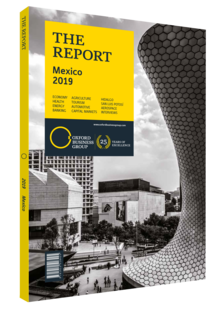Changing global migration patterns bring challenges and opportunities for emerging markets
As the world’s nations and businesses become increasingly interconnected, so too does the flow of global migration. According to the OECD’s “International Migration Outlook 2018”, in 2017 some 258m people resided in a country other than the one they were born in, and over 5m foreign-born persons were permanently settled in OECD countries. This flow of people not only brings benefits to the lives of the migrants themselves, but also contributes significant economic opportunities to individual businesses and states. Despite this, public opinion in many countries is turning against migration, with increasing numbers of states implementing measures to limit migration flows. This in turn has caused frustration for business leaders and economists, who generally continue to stress the economic benefits of migration. Nevertheless, research suggests that the number of those wishing to – or needing to – migrate across borders will continue to grow.
Pace of Migration
The growth of global migration is outpacing expert estimates. While the 258m global migrants make up only 3.4% of the world’s population, this figure is already higher than the 2003 prediction by the International Organisation for Migration (IOM) that international migrants would reach 230m to account for 2.6% of the global population by 2050.
In its “World Migration Report 2018”, the IOM described global migration as “the variable that had shown the greatest volatility in the past and was therefore most difficult to project with some accuracy”. Based on the current trends of natural disasters and political headwinds, the reality of global migration is likely to continue surpassing projections.
Forced Displacement
While most migrants choose to move abroad in search of better employment opportunities, between 2000 and 2015 an average of 20,000 people per day, or 6.9m annually, uprooted themselves due to environmental and political crises. The IOM points to conflict as one of the key drivers of global migration, in addition to generalised violence and other factors. According to the UN Human Rights Council, the number of people forced from their homes as a result of persecution, conflict, violence or human rights violations stood at a record 68.5m in 2017.
Forced displacement from troubled countries can benefit businesses that recruit migrants and the nations that provide them with refuge. However, analysts predict years of lag before such large populations can be fully assimilated into the workforce, and begin offering economic benefits such as plugging skills gaps or restoring equilibrium to ageing economies.
Climate Change
Although rarely cited directly by migrants as a cause for their relocation, climate change is undoubtedly a contributor to food insecurity and job losses in agricultural regions, particularly in the developing world. According to the IOM, a rising number of migrants from Africa and Latin America are citing poor harvests as a factor influencing their decision to migrate, while a 2017 study by the World Food Programme found that 47% of the Central American migrants interviewed described themselves as food insecure. Beyond climate change, other often overlooked factors include the increasing prevalence of precarious work, inequality and unequal development.
New Routes
The international trend towards tighter immigration policy, particularly among more developed countries, appears to already be having an effect on migration flows. A striking example of this can be found in Latin America. Mexico, which previously served as a transit route for migrants on their way to the US, has now become a destination in itself. The number of foreign-born persons in Mexico increased from 970,000 in 2010 to over 1.2m in 2017, according to the UN.
While the US and European states pursuing stricter immigration policies are expected to see labour shortages, particularly for skilled workers, other countries are set to benefit. Nations such as Mexico that previously lost out on the international movement of human capital, now find themselves in a stronger position.
You have reached the limit of premium articles you can view for free.
Choose from the options below to purchase print or digital editions of our Reports. You can also purchase a website subscription giving you unlimited access to all of our Reports online for 12 months.
If you have already purchased this Report or have a website subscription, please login to continue.

